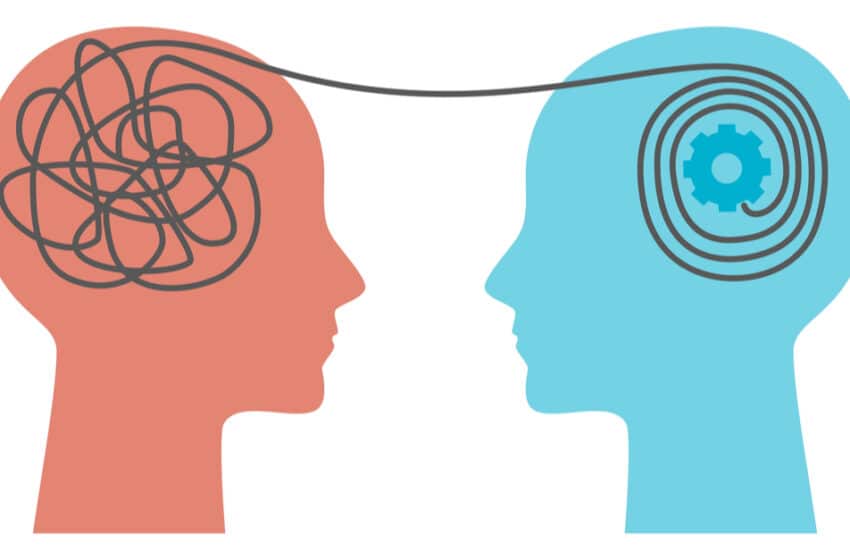The Future of Meaningful Innovation? Drop the Anxiety. Keep the Empathy.

Effective innovation requires these 3 empathetic components to maximize potential and outcomes.
The past year has been tumultuous. Each of us has had to maneuver through new situations, which left us feeling a multitude of emotions.
While stress and anxiety have been constant companions, so has our desire to maintain human connectivity. We’ve understood others’ anxiety and frustration (levels of stress peaked in 2020, with 57 percent of us claiming stress was leaving us feeling paralyzed), as we’ve been feeling it too.
But while stress and anxiety have reached new heights, so has our empathy.
Fertile Ground for Innovation
Just as the 2008 financial crisis led to increased innovation, the events of this past year have provided a unique opportunity to reconsider a new future as we reflect upon where we have been, and where we want to go.
What should we take away from the past year? What is the key to maximizing innovation moving ahead?
We need to leave behind feelings of anxiety but stay attuned to our enhanced empathy.
Leveraging Empathy to Improve People’s Lives in Meaningful Ways
Empathy is critical to the human side of innovation and essential to creating new products, services, or solutions that add meaningful value to people’s lives. Recentering on human needs and desires builds empathy.
“All of our work and research at Cloverleaf has taught us that creating new products and tackling complicated problems only happens well when people with differing perspectives can come together, listen, understand and morph their ideas into the strongest solution,“ says Kirsten Moorefield, cofounder and COO of Cloverleaf,a software service dedicated to building thriving teams.
Fundamentally, there are two ways that innovation begins:
The first is sparked by a new technology or product idea based on what we think people want, building it, and then pushing it out. This inward-looking approach leverages our product or technological assets but can often miss the mark by basing our offering on assumptions.
The second is born from the study of human desires. This approach to innovation starts with deep understanding of what is truly important in people’s lives right now. Watching closely, asking questions, and listening with an empathetic ear to our potential target customers as they experience the world.
What are their goals, their aspirations, their struggles? How can we connect deeply to understand not only more obvious functional needs but also more powerful emotional motivations?
Once their full range of needs is revealed, we have a more complete road map to guide innovation and build value for our customers.
Leveraging Empathy to Harness the Power of Emotions
Empathy allows us to evolve solutions that might have only delivered functional improvements into those that provide meaningful emotional benefits that are truly transformational.
Innovation is a forever project, so why the additional focus now? Teams and organizations have an opportunity to take advantage of empathetic realizations that came along with the pandemic crisis and leverage them into powerful new business opportunities.
Joe Berger, SVP of Commercial Sales and Marketing at Battelle says, “We include empathy in our innovation process as part of our human factors and contextual research work. It involves spending a lot of time with people who will actually use the technology we are developing, observing how they use it and feeding back to engineers, scientists, and designers who can address any shortcomings that are identified. The cost of this additional work can be a hurdle but focusing on it early and throughout the process we see huge benefits in usability and technology adoption.”
To generate the most powerful innovations in technology, products, services, or communications, we need to begin with deep understanding of how people feel. We should be working to leave behind our anxiety of the past year but stay closely connected to the real lives and feelings of the people around us, and what matters most to them.
Leveraging Empathy to Create a Foundation of Trust
Creating a culture of innovation requires a culture of trust, which stems from empathy between team members. Building an environment of psychological safety enables teams to effectively discuss and debate exciting, risky, innovative ideas and wrestle with the inevitable tensions that come with creating potential breakthroughs.
Without a safe place to bring together the range of different perspectives required to solve challenging problems, innovations will likely be constrained, remain incremental, and fall flat. Transformational innovation aimed at delivering significant impact often requires risk-taking.
“We strive to meet the needs of our patients and clients with cultural humility and empathy,” states Bill Hardy, President and CEO of Equitas Health, which offers high-quality healthcare at low cost to the LGBTQ+ community and beyond. “We have leaned into strong and steady communication to promote maintaining good health, offering more services for more patients. We pivoted to telehealth within three days to serve those who were challenged to seek care in person and our number of patient visits actually increased, including among underserved communities.”
Being attuned to the emotions of our teams, customers, and stakeholders is important as we face new rules of engagement and seek to unite in creating positive, disruptive innovation that delivers business growth. Letting our empathy drive us, let’s ask more questions, listen more intently, and work to understand more deeply.
We want to lean in with a human-centered approach to build things collaboratively based on truly recognizing what is important in people’s lives and thus knowing how to create value for them.
Moving Forward Together
To move forward, we need to leave behind the stress, fear, and anxiety that threatens to hold us back. At the same time, we should hold on to the deeper connections with others’ feelings that provide the fuel for fresh, powerful ideation.
Take action. Talk with your team and exchange ideas to keep elevated empathy alive. Continue to ask, “How are you feeling?” and listen closely as people share their unmet needs, desires, and aspirations.
Seize this unique opportunity to translate heightened empathy into transformational innovation.This article originally appeared on LinkedIn.




